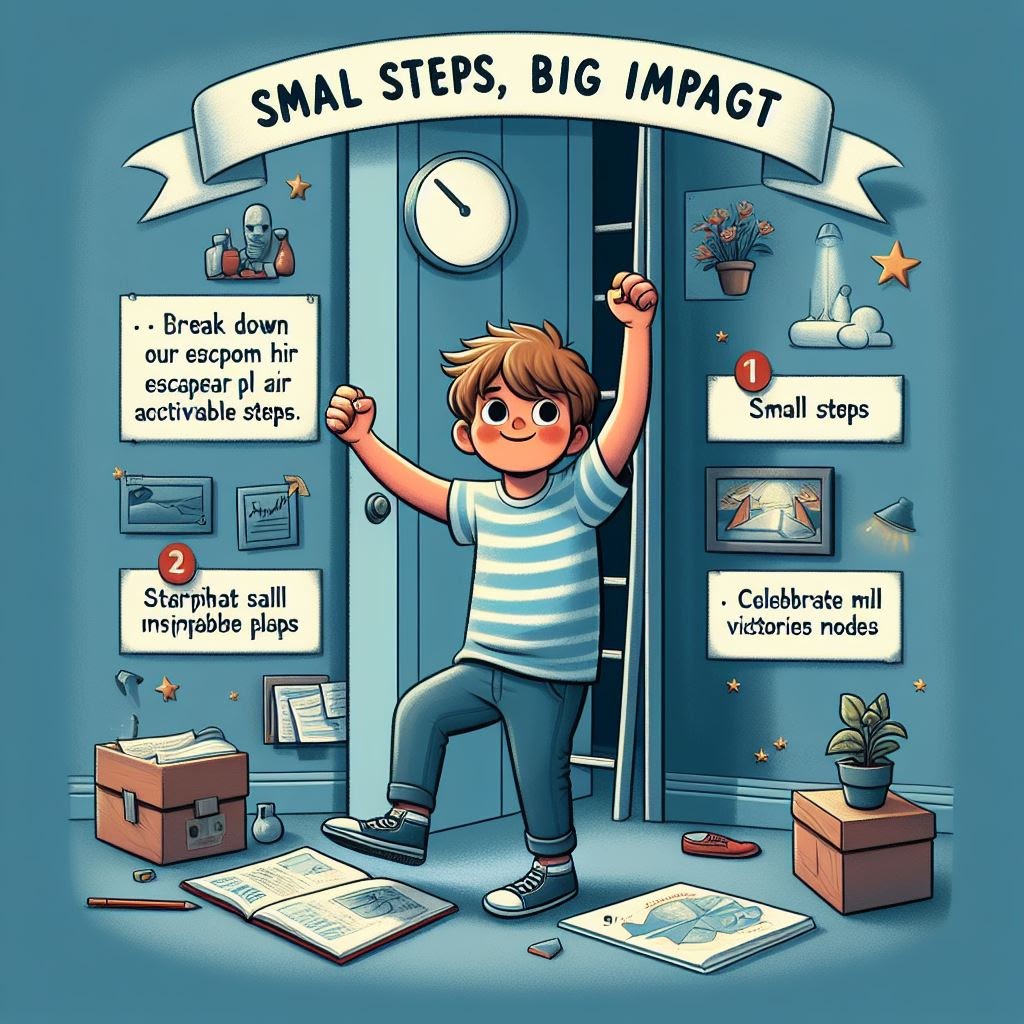I am all alone. what should I do?
Escape Plan from Loneliness: Embracing the Bright Side
1. Acknowledgment:
- Accept that loneliness is a real feeling, and it's okay to feel this way.
- Understand that isolation can have negative effects on mental health.
2. Identify Triggers:
- Reflect on situations or thoughts that intensify loneliness.
- Pinpoint activities or environments that contribute to feelings of isolation.
3. Break the Negative Loop:
- Challenge negative thoughts and self-talk.
- Interrupt the cycle of isolation by consciously engaging in positive activities.

4. Reach Out for Support:
- Share your feelings with a trusted friend or family member.
- Seek professional help if loneliness persists and affects your well-being.
5. Limit Social Media Comparisons:
- Be mindful of how social media can exacerbate feelings of inadequacy.
- Set boundaries for social media use to avoid unhealthy comparisons.
Bright Side of Loneliness:
- Use alone time to explore personal interests and passions.
- Rediscover hobbies or activities that bring joy and fulfillment.
2. Quality Alone Time:
- Embrace solitude as an opportunity for self-reflection.
- Use quiet moments to gain insights into personal goals and aspirations.
- Practice self-compassion and treat yourself with kindness.
- Develop a positive inner dialogue to counteract feelings of inadequacy.
4. Connect with Nature:
- Spend time outdoors, connecting with nature.
- Enjoy the simple pleasures of a walk in the park or sitting by a serene lake.
5. Mindful Practices:
- Integrate mindfulness into daily routines.
- Practice meditation or deep breathing to stay present and grounded.
6. Join Community Activities:
- Participate in local events or groups aligned with your interests.
- Foster connections through shared activities.
- Offer your time and skills to a cause you're passionate about.
- Volunteering not only benefits others but also provides a sense of purpose.
8. Learn Something New:
- Enroll in a class or workshop to acquire new skills.
- Learning fosters personal growth and opens avenues for social interaction.
- Establish a daily routine to bring structure to your day.
- Consistency provides a sense of stability and purpose.
- Gradually challenge yourself to engage in social activities.
- Start with small, manageable steps to build confidence.
Overall Approach:
- Small Steps, Big Impact:
- Break down the escape plan into achievable steps.
- Celebrate small victories along the way.
- Visualize Success:
- Envision a life where loneliness doesn't dominate.
- Picture yourself engaged in fulfilling activities surrounded by positive connections.
- Seek Professional Guidance:
- If loneliness persists, consider seeking guidance from a therapist.
- Professionals can provide tools and strategies tailored to your unique situation.
- Understand that progress takes time.
- Be patient with yourself and persist in implementing positive changes.
- Acknowledge and celebrate moments of progress.
- Each step forward is a triumph over loneliness.
Remember, the journey to escape loneliness is about finding a balance between self-discovery and connecting with others. By implementing this escape plan, you're not just avoiding loneliness; you're actively creating a life filled with purpose, connections, and personal fulfillment.






















Comments
Post a Comment